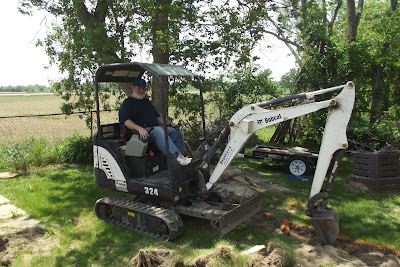Our deck needs a small table and I decided to look for a plan for a folding version.
 |
| folding chair and matching table, from an old wood project magazine |
 |
| table plan |
To make the table I gathered several pieces of oak from my stash of rough flooring boards.
I rip sawed the oak on my band saw to make the table top 3/8 inch thick and then joined and planed all the sections. Oak can have a wonderful grain and will look nice on the deck. In the pattern most of the wood is 3/4 inch but pine instead of oak. I opted for thinner hard wood, it should stand well if left on the deck in the weather.
I made all the pieces for this project, scraped and sanded everything to 120 grit before assembly.
When working with oak there a few of things to remember:
1. Oak is very hard and quite sharp so you have to be mindful of edges. Oak will splinter if you are not careful and it is no treat to get an oak sliver under a finger nail.
2. Oak has a great grain that you have to mix and match when you are setting boards beside one another to get the best effect.
3. Every fastener has to be pre-drilled or you'll split your wood or bend your nails.
4. Oak finishes very nicely with cabinet scrappers in place of sand paper, but watch out for the grain in the same way you do when hand planing
Next blog, the finished table.
cheers, ianw




































